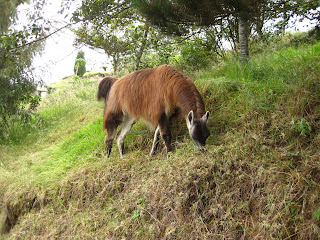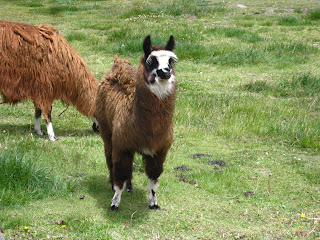Even an ending is
a beginning. As I wrote in the previous blog post, I'm amazed by how
little of the future we can imagine, even if we try to know as much
as possible beforehand. Greg did a ton of research before we decided
to move to Fort Collins. When he got the job at Poudre High School,
we knew that we were finally moving back, even if all the pieces
weren't perfectly put together. The pieces almost never truly align
anyway.
Before we moved to
Munich, we didn't fully understand what living a European lifestyle
really meant. We didn't know what it would be like to be living in a
country without knowing much of the language. We didn't know how open
other expats and teachers would be to accepting us into their lives,
or to what extent the Germans could be both reserved and
enthusiastic.
Before we moved to
Quito, we didn't really get what it meant to be in a developing
country. We didn't realize how incredibly lucky we were to have
well-paying jobs (by Ecuadorian standards) and be able to take
vacations and see the country. It was a privilege that not many in
that country have. We didn't understand real poverty until we went
there, but we also didn't understand how people with so little can be
so helpful and kind. At the same time, we didn't expect Ecuadorians
to be so shy about making friends with foreigners.
Of course, it
hasn't been all uncertainty. But there is a big difference between
what you know ahead of time and what actually greets you upon arrival
and how it fits into the grand scheme of things in a country. Moving
back to the US will be easy in some ways, but very difficult in
others.
I don't remember a
lot of thoughts and details I had before we left for Germany, but one
thought stands out vividly. It was the idea that I had that we would
not truly understand what was going on around us for a long time.
That thought turned out to be so true. It came out in daily
frustrations and funny mistakes alike.
Even with my level
of Spanish, I know now I can never truly assimilate into another
culture. It takes so much more than just language, or even just
having strong relationships with locals. You really cannot re-learn a
whole mindset. But the good news is that any experience is always
your own, even when you share it with others.
This may not be
our last blog post, but it will be one of them. This blog hasn't
always been easy to keep up. Many times though, we both felt so
excited to share our experiences with you all. I cannot tell you what
a comfort it has been to have you guys out there reading, responding,
and supporting us in our journey overseas. Thank you very much!























































